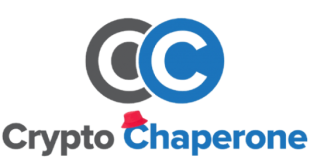Polkadot parachains full of promise, but lack of launch date raises concern

The parachain slot auctions are the next big milestone due on the Polkadot roadmap. So, what can we expect?
Polkadot’s parachain auctions will mark the most significant milestone on its roadmap since the mainnet launch in 2020. Currently in the testnet on the Rococo network, the next stage of the launch will involve the rollout of parachains on Polkadot’s crazy cousin, the “canary network” Kusama. The rollout of Polkadot parachains on the main network will follow.
What does this mean? The Polkadot mainnet has officially been in live operation for nearly a year now. However, only the central Relay chain has been up and running, with the last 12 months of development focused on implementing the platform’s decentralized governance.
The parachain rollout is the final stage in allowing decentralized applications to launch on the Polkadot network. However, with the rollout now past its initial rumored release date of Q1 2021 and with almost three months passing since the development roadmap was unveiled, there is still no exact date for when the deployment will eventually happen. So, what can we expect from this launch, and which projects will participate in the auctions?
How do the parachain auctions work?
Parachains are effectively shards on the Kusama or Polkadot networks, and the purpose of the auctions is to allocate parachain slots to projects wanting to operate on either network. The overall objective is to have 100 parachains operating concurrently. However, these will open up in batches, with the goal of having around 30 parachains operational within the first year.
Projects wishing to secure a Kusama parachain slot can participate in the auction by bonding their KSM tokens in a decentralized candle auction. These can be their own tokens, but a crowd loan mechanism is available for projects to source tokens from their communities.
A candle auction is a variation on the open auction where no fixed end time is given. This type of auction emerged in the 16th century when a candle was burned to determine the bidding time period. The idea is to encourage participants to make their highest bids as early as possible because they don’t know when the auction will end. Therefore, it prevents “sniping,” where a bidder swoops in during the final minutes with a winning bid.
Rather than a candle, a random number generator will determine the endpoint of each slot auction once bidding has been closed. Therefore, later bids will be disqualified if they come in after the retroactively determined closing time.
It’s worth noting that the successful bidders won’t “buy” their slots — only lease them, with the total value of the bid locked for the duration of the lease. Lease durations will be fixed (and the durations may differ between Polkadot and Kusama), and projects can bid for up to four successive periods. Therefore, the total duration of the bid will also be weighted into its value.
At the end of the final lease period, the slot will once again go up for auction.
Peter Mauric, head of public affairs at Parity Technologies — the company behind the Polkadot ecosystem development — said that it’s likely that competition will be fierce. Speaking to Cointelegraph, he said:
“Competition, especially for early slots on Kusama and Polkadot, is expected to be fairly intense, in my opinion. Because competitive auctions at the start are generally expected, I doubt projects will be severely disappointed, especially considering there is a new slot open every two weeks to bid on.”
Which projects will be bidding for a parachain slot?
In theory, any project can participate in the parachain slot auctions. However, they do need to have a codebase and either hold or have crowdsourced enough KSM or DOT tokens to outbid the competition.
Furthermore, the Kusama Council has stated its intent to award two Kusama slots to infrastructure projects deemed to be for the “common good” of the ecosystem. These are PolkaBTC, providing a bridge to the Bitcoin blockchain, and Snowfork, bridging to the Ethereum blockchain. Similarly, Statemint, a generic asset issuance platform, has been proposed as the first common-good project for the Polkadot network.
There have already been several projects that have expressed interest in participating. Acala, which aims to become Polkadot’s one-stop-shop for decentralized finance, will be bidding for its Kusama implementation, called Karura. Moonbeam, an Ethereum-compatible smart contract platform, will be seeking a slot for its Kusama version, dubbed Moonriver. And Kilt, which aims to bring decentralized credentials in the form of a universal log-on for Web 3.0 applications, will also be looking to secure a parachain slot. All three projects have been extremely active on the Rococo testnet and have active community participation.
Cointelegraph spoke with Dan Reecer, vice president of growth at Acala, about how the dual Kusama–Polkadot implementation will work in practice. He explained that both Acala and Karura aim to be the decentralized finance hubs of their respective platforms, and the project plans to run them concurrently in perpetuity. However, each has a role to play, as he stated:
“The difference between Karura and Acala is that with Karura, we’ll be more willing to take risks and experiment with new features and products. We are following the Polkadot ecosystem paradigm of testnet to experimental network (Kusama) to major network (Polkadot). Acala will remain the bank-grade, risk-averse network for DeFi on Polkadot with likely much higher TVL and assets under management in the Treasury.”
Despite the roadmap not having fixed any dates, it seems that projects are ready to go into production within weeks or even days of securing a slot. Derek Yoo, founder of the Moonbeam Network, confirmed that Moonriver is all but ready to deploy. He told Cointelegraph: “Moonbase Alpha has been running continuously since September 2020, and in that time, we have been able to release six upgrades to the environment, each with important new functionality,” adding:
“We have been able to iterate quickly because we have this stable testnet environment, and we feel that it has prepared us well for going live as a parachain.”
Ingo Rübe, CEO of Kilt Protocol, told Cointelegraph: “After winning a Kusama parachain slot, Kilt will go live within days rather than weeks. The functionality for decentralized identifiers (DIDs) and verifiable credentials is ready and has proven to be stable on our testnet.”
If demand for a slot indeed proves to be high, then many other projects will likely voice their interest in vying for a slot on Kusama, particularly considering that many projects have been waiting patiently for the parachain auctions without any confirmed date for when they’ll happen. Plasm, Darwinia, Robonomics and Crust are just a few of the other projects likely to participate.
What about prices?
Assuming that competition for the slots is high, then it’s a reasonable enough predictor for some bullish price action to come for KSM and DOT. On the most superficial level, more competition means bidders will be likely to go in high from the start. Because tokens are bonded for the duration of the lease, it will remove a share of the circulating supply of DOT and KSM from the markets, constraining supply.
However, the Kusama parachain auctions are the first live event of this kind, so there’s a chance that things might not pan out as planned. While the barriers to entry for acquiring a slot are set reasonably high, there is an outside chance that some actors may attempt to outbid the competition purely to sell it at an even higher price on secondary markets.
Indeed, this is a scenario acknowledged in the Polkadot documentation. There’s also the possibility that such an actor may attempt to “squat” on the parachain slot simply to prevent other projects from using it.
Such a scenario wouldn’t look good for the Polkadot ecosystem and would make it difficult for projects hoping to secure a parachain slot. About the price of tokens, it’s difficult to say. On the one hand, a bidding war could be positive for prices, but on the other, the reputational damage could negate any bullish effects.
Another unknown is around how the lease rules and continuing auction process may affect the overall stability of the Polkadot ecosystem. Projects that are already operating could lose their slot further down the line. Again, bidding wars at auctions might spell good news for token prices, but they could deter smaller projects from participating.
However, Parity’s Mauric doesn’t believe this will be a problem. He explained to Cointelegraph that the early parachains will most likely end up in the hands of well-established projects “that have been building their Substrate-based chains for years,” elaborating further:
“There are several options for a project that doesn’t win a slot on Polkadot at first, including deploying a parachain on Kusama or exploring deployment as a parathread in the future. Many application-layer projects will deploy on parachains as they launch, opening additional opportunities for teams and projects to collaborate and build on the active parachain while awaiting their own slot if that is their community’s goal.”
A word of caution
Ultimately, the hotly anticipated rollout of parachains does not just mean good news for the projects involved or those holding on to KSM and DOT tokens. While BTC and especially altcoins have experienced a boom in recent months, for example, the price of DOT has mostly gone sideways ever since the initial surge above $40 in mid-February. Further delays to the release will likely put more pressure on the price of the token.

Finally, when considering participating in the crowd loan process, beware of scammers. The Kusama auctions page holds a warning that there may be fake crowd loan campaigns doing the rounds. So, if you’re planning to stake your DOT or KSM in a parachain crowd loan, make sure that you’ve done your due diligence on the project in question.
None of this is to say that any of these potentially worst-case scenarios will come to fruition and negatively impact the milestone on the Polkadot journey. The project has a ready-made suite of projects that are ready to go, and from that perspective, this launch is perhaps a bigger deal than many other mainnet launches that subsequently have to work to attract development.



